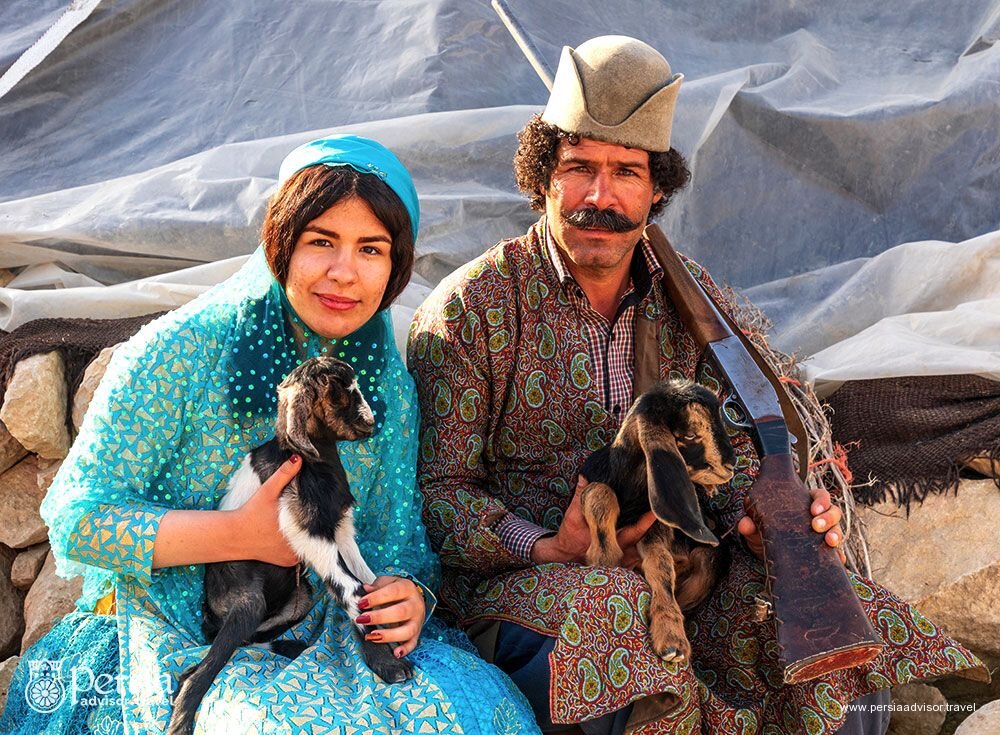By Afshin Majlesi

TEHRAN – Sometimes, the hustle and bustle of modern life make us run away to a different lifestyle, where we may quell our anxieties.
For these interested in a slow-paced, quiet life in the heart of nature, a tour to Iranian nomads may work well. It may help you see how it looks like to be a shepherd away from the usual concerns of modern life!
It might be a first-hand experience to wake up in a tent, listening to the flocks of sheep and goats’ chimes while overwhelmed with nature eating a strong breakfast!
Iran nomads are indeed generous, hospitable, and friendly. They enjoy accompanying sightseers, inviting them to try their delicious cuisines and natural foodstuffs. You may get into a time machine there to milk the sheep, make your own bread in traditional stoves, make dairy products, fetch water and spend some peaceful afternoon with nomads in their cozy black tents.
If you put off your electronic gadgets for a while, you will have a great chance to experience life deep in the wilderness, living absolutely traditionally in the 21st century.
Nomads enjoy drinking afternoon tea and smoking hookah while playing traditional games or celebrating feasts. A nomadic lifestyle may take you deep to its delightful lands of colors, customs and culture; a world totally different from the one you are used to.
They are mostly pastoral nomads who are moving between pastures to find feed for their livestock to be able to produce dairy products, meat, wool, animal hair, hides, or leather.
Iranian nomads live in Fars, Chaharmahal and Bakhtiari, Khuzestan, Isfahan, and some other provinces. They usually change between their winter quarters in steppes (Qishlaq or warmer areas) and summer quarters in green mountainous regions (Yeylaq or cooler countryside).
Tourists, in fact, may help nomads to provide them with additional income, by, for instance, purchasing their nomadic natural products, souvenirs, and handicrafts, such as leather, Kilim, Jajeem, dolls, handmade textiles to name a few. This way, travelers, encourage them to preserve their unique lifestyle as a treasure of Iranian culture.
You can visit nomads at different times of the year. However, the best seasons are spring and summer. There are several nomadic tribes you can meet or stay with, each of them having its own unique lifestyle, culture, customs, foods, and musical performances.
For instance, Qashqai tribe that is a combination of Turk, Kurd, Lori, and Arab ethnic groups mostly settle in Fars, Khuzestan, and Isfahan provinces and speak both Persian and Qashqai languages. They are famed for their attractive, colorful clothing, circular group dances, feasts, and celebrations. Each year, they make an epic journey of about 480km from the pastures in the north of Shiraz to the south of the country, near the Persian Gulf, where it is warmer for the winter.
Massive Bakhtiari tribes mostly live in Khuzestan, Lorestan, Isfahan, and Chaharmahal-Bakhtiari provinces. They have been migrating over the Zagros mountain range for hundreds of years.
Shahsavans, Azari-Turkish pastoralists who are moving between the Mughan steppe of Azarbaijan and the Sabalan Mountains, are famed for their genuine lifestyle and ceremonies such as multi-day wedding ceremonies. Their hemisphere-shaped tents, locally called Koomeh, are quite different from the others. Moreover, their handicrafts are inspired by the four elements of nature. Some say the glowing colors of nomadic clothing are in contrast to the dull mode of our modern fashion.

No comments:
Post a Comment